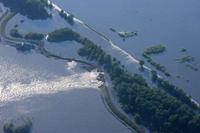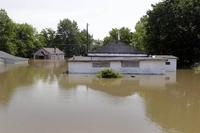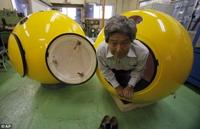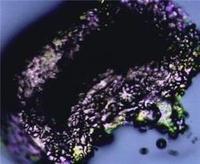-
Study finds disaster survivors more prone to fatal mistakes
A new study concludes that survivors of traumatic natural disasters may suffer from a decline in mental capabilities causing them to make grave errors in their daily lives
-
-
Caring for New York’s elderly in a disaster
Given the recent spate of natural disasters that struck the United States and New York City itself, community leaders there are concerned about disaster preparedness particularly for the city’s elderly and disabled populations
-
-
Invisibility cloak to protect buildings from earthquakes
Scientists show that by cloaking components of structures with pressurized rubber, powerful waves such as those produced by an earthquake would not “see” the building — they would simply pass around the structure and thus prevent serious damage or destruction
-
-
Preventing earthquake-induced soil liquefaction to protect buildings
When earthquakes occur, buildings can shift or fall; often, the failure is because of soil liquefaction, a phenomenon that occurs when loose, water-saturated soils lose strength in response to the sudden shaking from an earthquake, causing the soil to behave like a liquid; scientists have come up with a way to minimize liquefaction
-
-
Shape-memory alloys for earthquake-resistant structures

To improve the performance of structures during earthquakes, researchers have been investigating the use of “smart” materials, such as shape-memory alloys, which can bounce back after experiencing large loads
-
-
The causes of massive snow storms
Three storms spanning from December to February in the winter of 2009-10 had dumped a whopping 54.9 inches of snow on the Baltimore-Washington area; the snowfall broke a seasonal record first set in 1899; Snowmaggedon, as the winter was dubbed, entered the history books as the snowiest winter on record for the U.S. East Coast
-
-
Understanding how earthquakes work
Geologists have a new tool to study how earthquakes change the landscape down to a few inches, and it is giving them insight into how earthquake faults behave
-
-
Local officials oppose “unacceptable” levee ratings

In recent years as part of an effort to bolster the nation’s flood protection infrastructure, the Army Corps of Engineers has analyzed and declared more than 200 levee systems across the country as “unacceptable,” resulting in a firestorm of criticism from local officials
-
-
Disasters hurt Honda’s production, lower revenue
On Tuesday Japanese auto manufacturer Honda Motor Company announced that it had slashed its annual profit guidance as a result of the natural disasters in Japan and Thailand
-
-
Sea water could corrode nuclear fuel
Japan used seawater to cool nuclear fuel at the stricken Fukushima-Daiichi nuclear plant after the tsunami in March 2011 — and that was probably the best action to take at the time; scientists have since discovered a new way in which seawater can corrode nuclear fuel, forming uranium compounds that could potentially travel long distances, either in solution or as very small particles
-
-
Tsunami debris spread across Pacific Ocean
The 11 March 2011 tsunami in Japan washed millions of tons of debris into the Pacific; scientists have been trying to track the trajectory of this debris that can threaten small ships and coastlines
-
-
Insurance companies predict increase in premiums

Even after all the flood waters have receded and power has been restored, New Jersey homeowners will still have to suffer the consequences of Hurricane Irene; according to insurance industry representatives and analysts, homeowners and businesses will likely see their insurance premiums increase over the next several years
-
-
Midwest preps for multi-state earthquake drill
Emergency management agencies across the central United States are getting ready for a multi-state earthquake preparedness drill next month; led by the University of Southern California’s Earthquake Center, on 7 February at 10:15 AM CST, more than one million people across nine states will participate in the “Great Central U.S. ShakeOut”
-
-
Floating life capsule can save lives in tsunami

Following the devastating earthquake and tsunami that left roughly 20,000 people dead in Japan, Japanese engineers have been hard at work developing innovative solutions to help save lives in the event of another major disaster; one such invention is Noah, a floating capsule that holds up to four people
-
-
World’s first magnetic soap can clean oil spills

A University of Bristol team has dissolved iron in liquid surfactant to create a soap that can be controlled by magnets; the discovery could be used to create cleaning products that can be removed after application and used in the recovery of oil spills at sea
-
More headlines
The long view
Using Drone Swarms to Fight Forest Fires
Forest fires are becoming increasingly catastrophic across the world, accelerated by climate change. Researchers are using multiple swarms of drones to tackle natural disasters like forest fires.
How Climate Change Will Affect Conflict and U.S. Military Operations
“People talk about climate change as a threat multiplier,” said Karen Sudkamp, an associate director of the Infrastructure, Immigration, and Security Operations Program within the RAND Homeland Security Research Division. “But at what point do we need to start talking about the threat multiplier actually becoming a significant threat all its own?”
